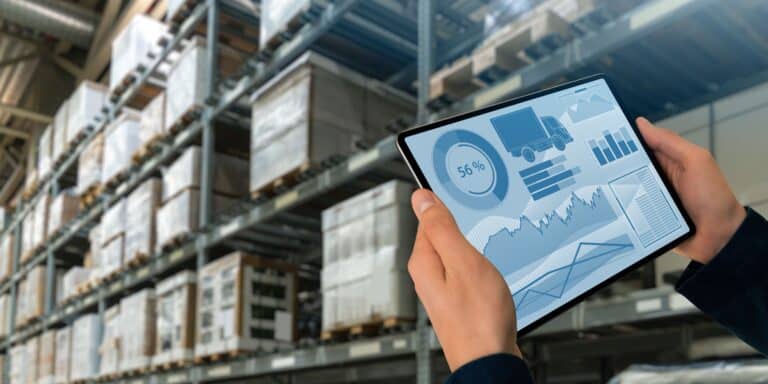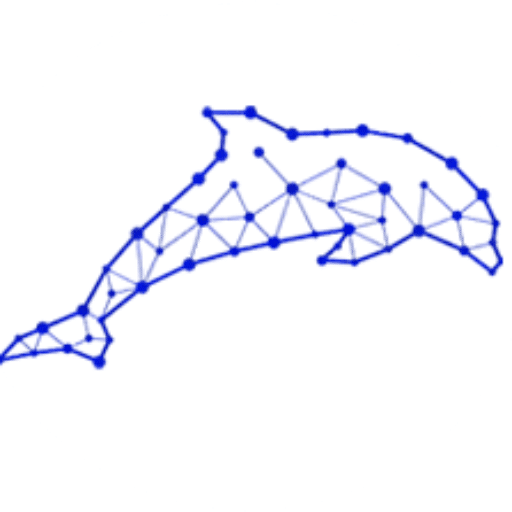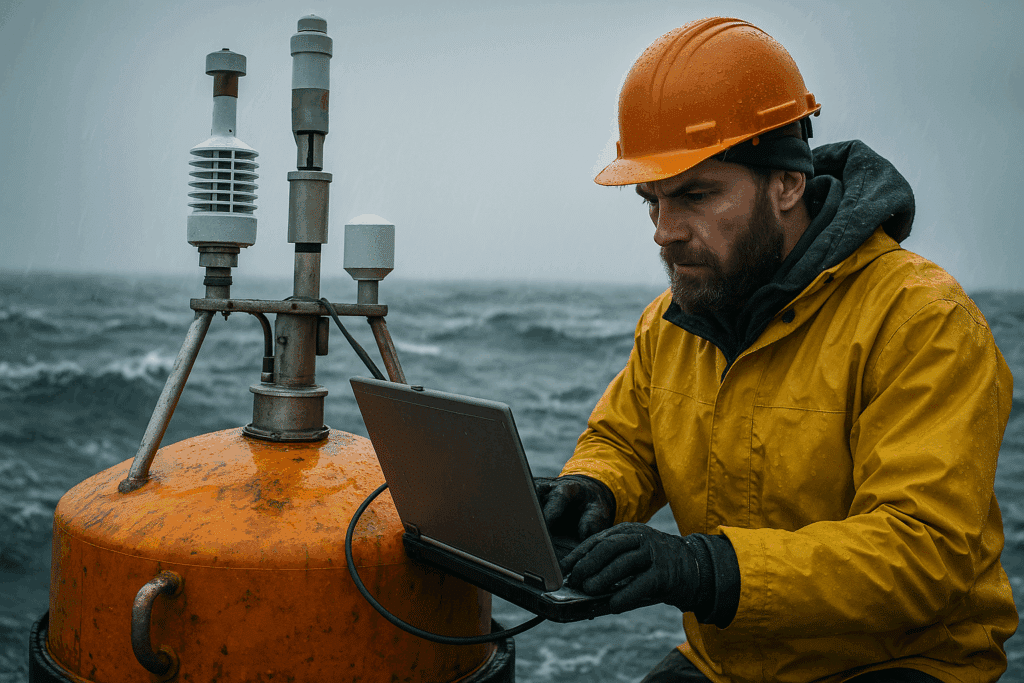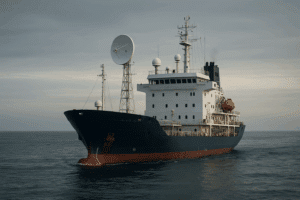Our oceans are suffering from pollution, both from physical waste like plastic trash and from noise pollution caused by human-made activities such as shipping, drilling, and construction. These disturbances threaten marine life, disrupt ecosystems, and make it harder to understand what’s really happening beneath the surface. To protect our oceans, we need to apply effective strategies and monitor them by using accurate and real-time data.
Advances in Internet of Things (IoT) sensors are smart devices used to observe and collect data from marine environments, provided that they work reliably in some of the harshest environments on Earth. That’s why calibration and validation are critical.
How are these sensors calibrated and validated to ensure they provide accurate and trustworthy data? This article reviews the calibration and validation processes of IoT ocean sensors in harsh marine environments
Calibration and Validation of IoT Ocean Sensors
In 1990, the American computer scientist John Romkey created the first IoT device, a toaster that could be turned on and off over the Internet.
The concept of the IoT system matured between 2008 and 2009, when the number of connected machines exceeded the human population. Today, these smart, low-cost, and internet-connected sensors are widely used to measure conditions in the ocean because they can gather data such as temperature, salinity, wave height, water quality, noise levels, and currents. These sensor systems are typically placed on buoys (floating devices stay on the water’s surface) and autonomous underwater vehicles (AUVs), forming part of an interconnected network.
As components of the Internet of Things (IoT), they are created for real-time data transmission to researchers, satellites, or cloud systems for analysis. Their low-power design ensures they can operate efficiently across remote marine environments while supporting large-scale monitoring networks.
The Process of Calibrating IoT Ocean Sensors in Harsh Environments
IoT ocean sensors are the ocean’s digital nervous system because they constantly detect and transmit critical information. Calibrating these technologies involves several important steps to ensure accurate water quality monitoring in harsh environments. First, calibration is performed in controlled conditions using reference instruments to set baseline measurement values. Next, field calibration adjusts the sensor to match local environmental variables like saltwater, temperature extremes, gas levels, and high pressure, ensuring reliable data once deployed. During on-site recalibration, the sensor is checked and adjusted within the deployed network to maintain accuracy over time. This system reduces long-term costs while ensuring low error rates.
High-quality calibration is essential for consistent data in research on platforms like Google Scholar, where recent review papers and figures illustrate the importance of accurate sensor measurement. An accurate calibration is crucial as it supports better monitoring and decision-making in marine science and environmental protection. Without it, the quality of ocean data degrades, which reduces the effectiveness of real-time sensing and analysis.
What are Techniques for Validating Sensor Accuracy and Reliability?
Before collecting and analyzing IoT data, you need to validate that your sensor system provides reliable and accurate measurements. This ensures that the results are relevant and dependable for decision-making. Several methods can maintain data quality, and the most accurate include:
1- Post-deployment validation using reference instruments
This involves checking sensor readings against trusted devices in the field. The review-based approach ensures your system can function properly and detect early drift. Many studies in Google Scholar, MDPI, and published proceedings with DOI references highlight this as a low-cost, high-impact method for water monitoring, gas detection, and air quality tracking. It also reveals the sensitivity and engineering potential of connected things in dynamic marine and terrestrial environments.
2- Satellite data comparisons
This offers a broader perspective by matching sensor data with satellite observations. This figures out inconsistencies and improves large-scale detection efforts. Authors often support this in published reviews to ensure that calibration and measurement quality across the IoT sensor network are verified at scale using real-time figures and data from comparative studies. The satellite data integration enhances network design and boosts the system’s detection capacity for air, water, and gas environments.
Standards and Protocols
Covering over 70% of the Earth’s surface, the marine environment is crucial in regulating global climate and supporting our means of living. Therefore, managing this vast and complex ecosystem is important for environmental sustainability.
International organizations like ISO (International Organization for Standardization) and NIST (National Institute of Standards and Technology) have established rigorous standards and protocols to ensure consistent and reliable measurement across global ocean monitoring systems.
These guidelines align sensor calibration and validation practices, especially in complex environments involving water, air, and gas interactions. With these standardized procedures, IoT sensor system performance is improved, allowing water quality data from various regions, sensors, and network devices to be compared. In addition, they also promote seamless communication between platforms and research teams, supporting low-cost, high-impact monitoring approaches, as shown in figure references and validated by global study networks.
Environmental Challenges and Sensor Performance
Currently, more than 21.5 billion IoT sensors are connected worldwide, marking a growth of 13%. Estimated to reach 40 billion by 2030, these smart systems have become essential for monitoring water quality, air parameters, and marine conditions. Nevertheless, environmental factors in complex marine networks impact the performance, sensitivity, and long-term reliability of these devices. Design optimization and cost-effective methods are necessary to adapt IoT systems to the extreme ocean environment, as discussed in several articles, reviews, and proceedings indexed in platforms such as MDPI and those assigned with a DOI.
Challenges Faced by IoT Sensors in Oceanic Conditions
Ocean depths range from the Epipelagic Zone at 0 meters to the Hadalpelagic Zone at nearly 11,000 meters. Operating in such extreme fields presents numerous challenges affecting the measurement accuracy, durability, and functionality of sensors. These environmental conditions often raise system cost, complicate deployment logistics, and hinder network stability. Numerous review studies and illustrative figures show that sustaining high-quality, low-error data across dynamic IoT sensor networks remains a central focus in modern system structure and monitoring research.
Biofouling
This issue arises when algae, barnacles, and microorganisms accumulate on the sensor surface. Triggered by marine exposure, this natural process begins with biofilm formation, which later attracts larger species. Over time, the biological buildup disrupts sensor sensitivity, distorts data, and impairs system communication across the IoT network.
Corrosion
Prolonged exposure to salt water can induce corrosion, damaging the gas-tight electronic components and outer housing of sensors. This degradation raises operational costs, shortens the service life, and compromises design integrity.
Pressure Damage
In deep-sea conditions, IoT ocean sensors face immense pressure that may deform critical design components or damage the enclosure if not properly sealed. Ensuring low failure rates requires high-strength materials, pressure-compensated housings, and advanced system techniques.
Signal Interference
Underwater network communication is prone to signal interference due to environmental sensitivity, including reflections, obstacles, and salinity variations in water. This disrupts data transmission and affects real-time accuracy across IoT systems.
Battery Limitations
Limited battery capacity is a major concern in remote IoT sensor deployments where direct power sources are unavailable. Efficient energy design must balance power conservation with regular measurements. Studies from MDPI, DOI-tagged proceedings, and field evaluations highlight the potential of optimized low-power designs and energy harvesting to prolong sensor life and reduce maintenance costs.
Improvement Technologies
What are the improvement technologies for calibration and environmental monitoring?
1- AI-Driven Self-Calibration Systems
Modern IoT sensors benefit from an AI-driven calibration system that continuously adapts to changing water conditions. These smart platforms use historical data and real-time input to adjust each sensor’s measurement parameters automatically. Google Scholar highlights that these advancements reduce human intervention and ensure high data quality over extended periods. This system reduces cost while supporting low-error environmental monitoring.
2- Smart Materials for Real-Time Adjustments
Emerging sensor designs now incorporate smart materials that respond to variables such as salinity, temperature, and pressure. These materials allow the measurement system to maintain consistent calibration despite environmental fluctuations. This will improve monitoring accuracy and lower maintenance needs. According to recent academic reviews on Google Scholar, integrating smart materials in IoT sensors provides a scalable solution for delivering timely water quality data.
3- Remote and Cloud-Based Calibration Platforms
A cloud-based system enables the remote calibration of IoT sensors in real time. Users are able to adjust sensor parameters based on live data streams without physically retrieving the devices. These platforms, discussed in Google Scholar, enhance measurement reliability as well as reduce operational costs by maintaining low error rates over time. This method ensures consistent water monitoring and supports long-term ocean observation programs.
4- Integrating Satellite and Networked Data for Sensor Accuracy
To improve sensor validation, some IoT devices now compare real-time water data with satellite imagery and other oceanic sensors. This approach ensures that measurement anomalies are quickly detected and corrected. The diverse sources integration supports high-quality environmental monitoring at a low cost, offering a robust framework for decision-making based on real and reliable marine data.

Applications and Impact of Calibrated Ocean Sensors
Calibrated ocean sensors are specialized devices used in marine environments that have been adjusted and tested to ensure their measurements are accurate and reliable. Actually, calibration compares the sensor’s readings against known standards so the data they collect truly reflects the conditions in the water. The innovation impacts various sectors, including protecting marine species, improving navigation safety, and climate modeling. Integrating satellite and networked data for sensor accuracy improves detection and tracking by linking local sensor networks to global observation systems.
Real-World Applications of Calibrated Sensors
Calibrated IoT ocean sensors are deployed in systems to measure critical water parameters with high sensitivity and quality. This ensures that collected data supports timely and informed decisions. Below are some applications of these advancements.
Coral Reef Monitoring
A coral reef is a diverse underwater ecosystem characterized by reef-building corals. It supports a huge variety of marine life, such as thousands of fish species, invertebrates, and plants. In this sensitive environment, IoT sensors measure temperature, pH, and light levels. A calibrated system ensures that even the smallest variations in these parameters are accurately captured over time. This helps scientists track bleaching events and water quality changes that affect biodiversity.
Pollution Tracking
Networks of calibrated sensors detect contaminants such as oil, plastics, and chemicals in coastal and open waters. This system enables real-time monitoring and rapid response, reducing damage and supporting environmental protection efforts.
Ocean Temperature and Salinity Profiling
In the ocean, surface temperatures are generally warmer due to sunlight, while deeper waters are much colder. Temperature and salinity are core oceanographic measurements that influence marine currents, weather, and climate. IoT sensors deployed on buoys or autonomous vehicles provide high-resolution data for monitoring water quality and improving the accuracy of ocean system models and climate forecasts. These sensor networks support low-cost, high-impact approaches to long-term ocean observation.
Maritime Safety
Reliable water condition monitoring is crucial for shipping and offshore industries. Calibrated sensors measure wave height, current speed, and other parameters to ensure navigational safety and support operational planning in real time. The system enhances overall safety while keeping operational costs low. High-quality measurements from sensor networks help reduce risk, improve fuel efficiency, and strengthen maritime safety.
We live on a planet that enables us to explore, protect, and understand our oceans. In extreme marine environments, IoT ocean sensors are effective tools that must be calibrated and validated. This ensures the data they collect is accurate and reliable. From battling corrosion and biofouling to maintaining performance under immense pressure, these smart technologies face critical challenges. However, when they are properly maintained, they support essential applications in climate forecasting, marine conservation, and navigation safety.
FAQ about IoT Ocean Sensors
Calibration ensures that oceanographic IoT sensors (e.g. for salinity, temperature, pH, dissolved oxygen) deliver accurate and reliable data despite exposure to:
High salinity
Pressure variations
Biofouling
Temperature fluctuations
Without regular calibration, data can become skewed, impacting navigation safety, environmental monitoring, and compliance reporting.
Sensors are typically calibrated in controlled laboratory conditions using certified reference standards. Key steps include:
Baseline accuracy testing
Sensor offset adjustment
Cross-validation with reference instruments
Manufacturers may also simulate harsh ocean conditions in pressure tanks or thermal chambers for pre-deployment validation.
In-situ validation includes:
Deployment alongside known reference sensors
Redundant measurements for cross-comparison
Periodic manual sampling (e.g. CTD casts) to validate live data
Validation is often supported by edge AI algorithms that detect drift or anomalies in real time.
To maintain calibration in harsh environments:
Auto-calibration routines are embedded in modern sensors
Anti-biofouling coatings and mechanical wipers reduce data drift
Satellite or remote diagnostics alert operators to calibration issues
Maintenance cycles are optimized based on sensor type, depth, and deployment duration.
Yes. Key standards include:
ISO 17025 for laboratory calibration
IOC/UNESCO guidelines for ocean sensor quality control
Protocols from organizations like GOOS and EuroGOOS
Following these standards ensures interoperability, credibility, and data traceability in marine science and maritime operations.



